When I think about teacher and leader capacity, I think of the Bell Curve, which is commonly used to indicate how a particular characteristic of a group varies from the mean.
From my research in 30+ states, I have found that the capacity of the vast majority of America’s teachers and school leaders to serve children well is no more than two standard deviations from the mean. That’s fancy for… most educators have the capacity to learn both content and pedagogy. Likewise, most have the ability to plan and deliver quality instruction aligned to the expectations of curricular and developmental standards; especially when exposed to high-quality, ongoing professional learning opportunities offered in a culture characterized by support and collegiality.
We cannot fire our way to our site-based dream team, instead, we have to support and edify team that we currently have – with a few exceptions of course. School improvement must not be characterized by reform by pink slip; rather we must implement a targeted-feedback-and-support approach to school reform. We cannot scapegoat teachers and school leaders who have not had equitable access to high-quality professional learning, consistent feedback, coupled with the time necessary for the impact of “implementation” to take root.
School improvement is not a sprint, it’s a marathon.
Now, with that said, there is a small number of teachers and school leaders on every campus who are exceptional as it comes to their individual capacity to promote student achievement; that is – they are exceptionally adept or inept at receiving constructive feedback and incorporating coaching content into their teaching and assessment practices.
What does this mean?
There are a handful of teachers and school leaders who do not need constant feedback and support – and they have the data to support it. Their capacity is three standard deviations from the mean in the positive direction. Leave them be; consider using them as a resource to other teachers; and do everything possible to retain them.
And then, there are a handful of teachers and school leaders who desperately need constant feedback and support – and they have the data to support it. Their capacity is three standard deviations from the mean in the negative direction. You must give them access to content-specific and pedagogy-focused professional development; unfettered access to appropriate academic resources; frequent (near daily), constructive feedback; and opportunities to understand, reflect upon, and discuss the feedback.
What’s the epiphany?
Do yourself and everyone a favor and refrain from a one-size-fits-all approach to supervision. They don’t have the same needs. Instead, take a tiered (needs-based) approach to providing members of your team feedback and support.
Doing so will give you the time that you need to expedite student achievement and school improvement by focusing your, sometimes, limited resources on those who have the greatest need as expressed by student outcome data.
For more information on this topic, read chapters 3 and 7 of my most recent book, “The Integrated Approach to Student Achievement” – Second Edition.
Donyall D. Dickey, Ed.D.

